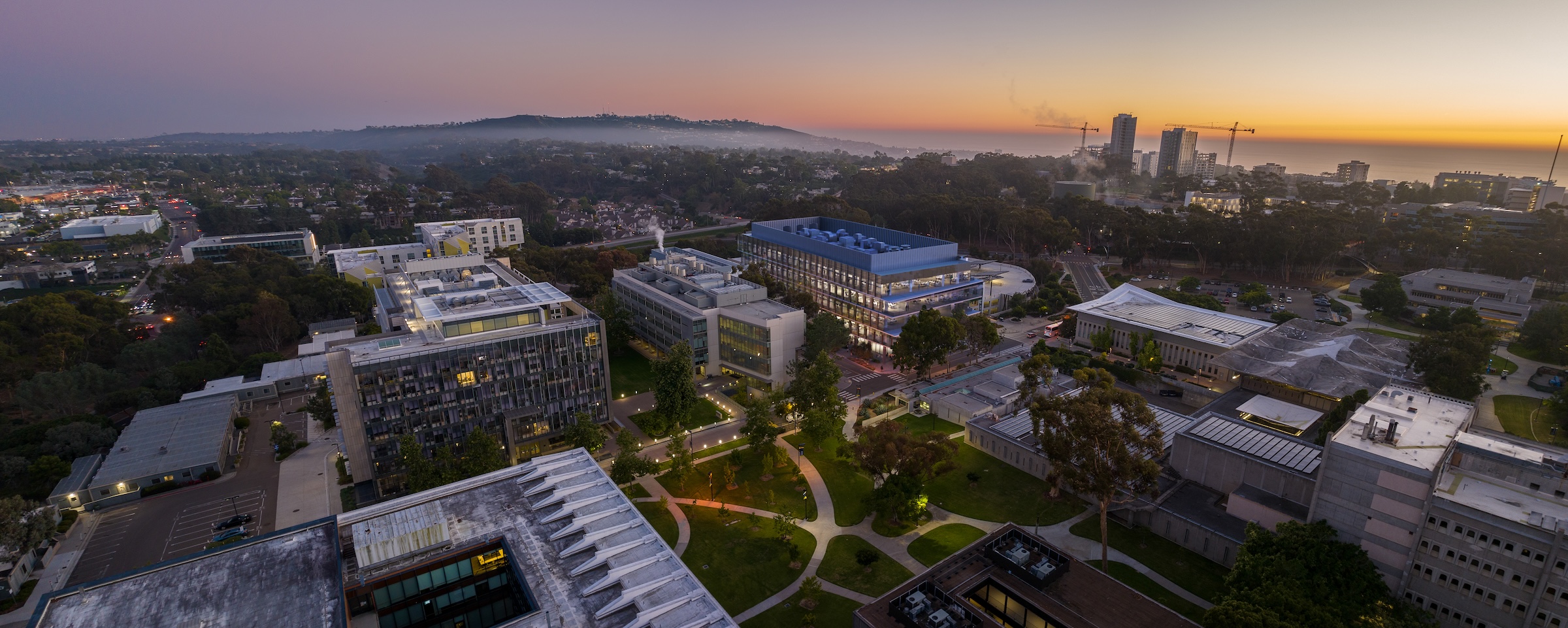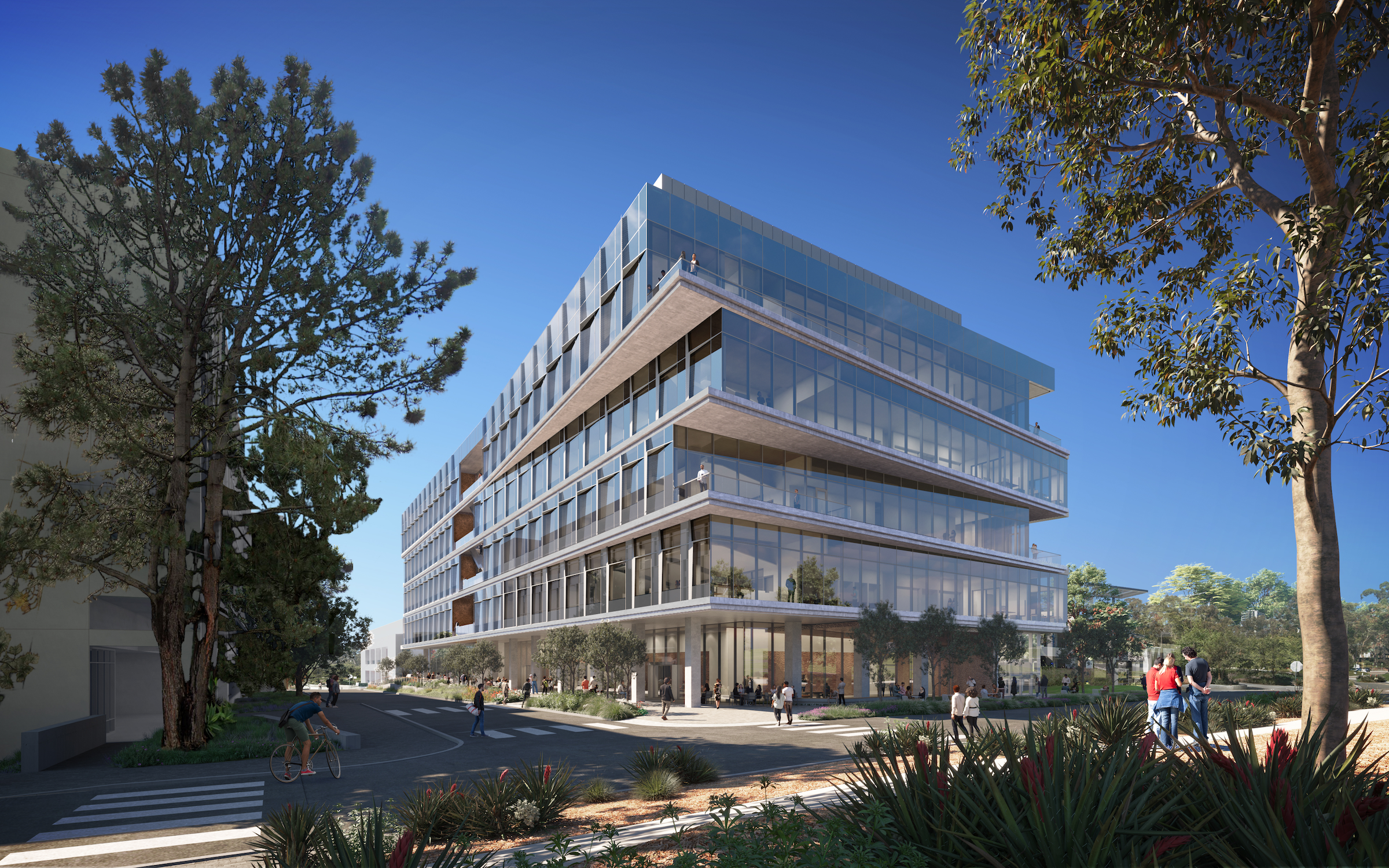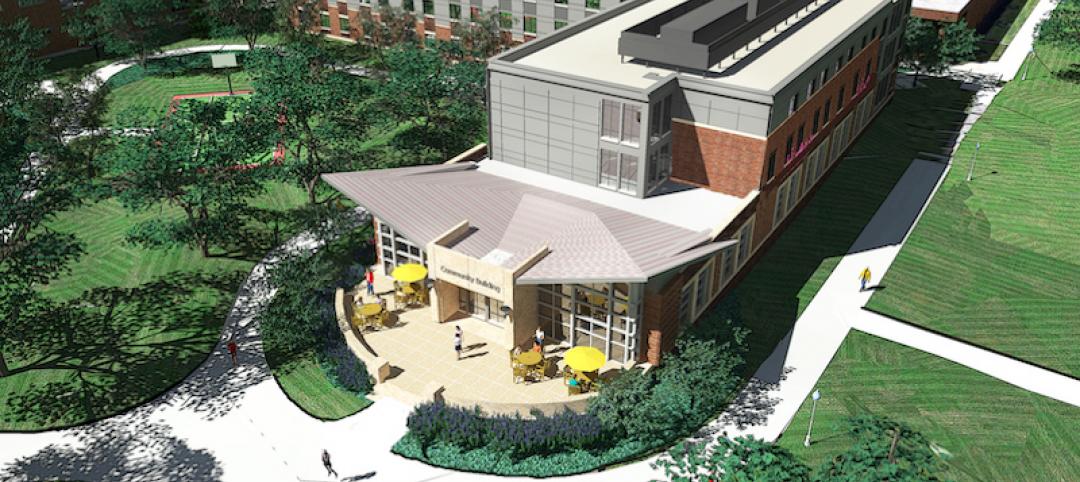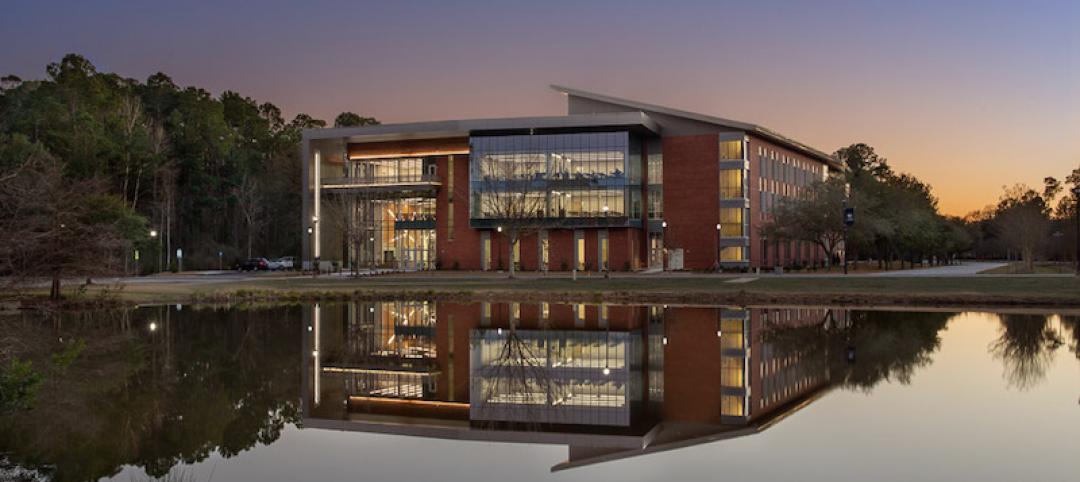The University of California San Diego has approved plans for a new Multidisciplinary Life Sciences Building, with construction starting this fall. The 200,000-sf, six-level facility will be the first building on the UC San Diego campus to bridge health science research with biological science research and teaching.
The facility aims to help meet a growing demand for modern teaching and research space across disciplines at UC San Diego Health Sciences and the School of Biological Sciences. Research and teaching will focus on the intersection of neurodegenerative disease, inflammation, immunology, and infectious disease—using advanced technologies to drive discovery in academia and industry.
The design by Flad Architects creates scientific neighborhoods that support interdisciplinary collaboration and education at the interface of biology, machine learning, and advanced instrumentation. The research laboratories enable flexibility in response to changing programs and research, while the teaching laboratories integrate experimentation, instrumentation, and computational analysis.

The building program also includes shared research facilities, collaborative meeting areas, conference rooms, offices, and public spaces.
In the glass façade, perforated concrete fins serve both as a shading device and as a light shelf reflecting natural light into the building. The massing also creates outdoor terraces on each floor. The building’s upper floors are offset, creating the appearance of rotated stacks. The street level, with biological science classrooms and shared meeting rooms, will put science on display.
“The Multidisciplinary Life Sciences Building will help solidify UC San Diego’s standing as a premier research institution in the field of neurobiology,” John M. Carethers, MD, vice chancellor for health sciences at UC San Diego, said in a press statement.
The project is designed to meet LEED Gold certification at a minimum. Construction on the site, currently a parking lot and service road, is expected to start in fall 2024 and conclude in 2027.
On the Building Team:
Design architect and architect of record: Flad Architects
MEP engineer: Salas O’Brien
Structural engineer: KPFF Consulting Engineers
Construction manager: McCarthy
Related Stories
University Buildings | Jun 28, 2021
MiraCosta Community College to receive new Chemistry and Biotechnology Building
HED designed the building.
Resiliency | Jun 24, 2021
Oceanographer John Englander talks resiliency and buildings [new on HorizonTV]
New on HorizonTV, oceanographer John Englander discusses his latest book, which warns that, regardless of resilience efforts, sea levels will rise by meters in the coming decades. Adaptation, he says, is the key to future building design and construction.
University Buildings | Jun 21, 2021
Rediscovered Mies van der Rohe design under construction at Indiana University
The design was originally created in 1952.
University Buildings | Jun 18, 2021
The Scott A. McGregor Computer Science Center completes on Harvey Mudd College’s campus
Steinberg Hart designed the project.
University Buildings | Jun 14, 2021
Radford University’s new $80.5 million Center for Adaptive Innovation and Creativity
Hord Coplan Macht designed the project in collaboration with William Rawn Associates.
University Buildings | Jun 8, 2021
Living/Learning Residence Hall breaks ground at Augustana University
KWK Architects designed the project.
Education Facilities | Jun 4, 2021
Three ProConnect events coming this fall: Sustainability (Nov 2-3), Education (Nov 16-17), Multifamily (Dec 12-14)
SGC Horizon ProConnect 2021 schedule for Education, Multifamily, Office, and Single Family events.
University Buildings | Jun 1, 2021
Georgia Southern’s new $60 million Engineering and Research Building completes
The facility will serve as the new epicenter for engineering excellence and innovation in southeast Georgia.
University Buildings | May 26, 2021
Harvard University Science and Engineering Complex completes
Behnisch Architekten designed the project.
Digital Twin | May 24, 2021
Digital twin’s value propositions for the built environment, explained
Ernst & Young’s white paper makes its cases for the technology’s myriad benefits.




![Oceanographer John Englander talks resiliency and buildings [new on HorizonTV] Oceanographer John Englander talks resiliency and buildings [new on HorizonTV]](/sites/default/files/styles/list_big/public/Oceanographer%20John%20Englander%20Talks%20Resiliency%20and%20Buildings%20YT%20new_0.jpg?itok=enJ1TWJ8)












